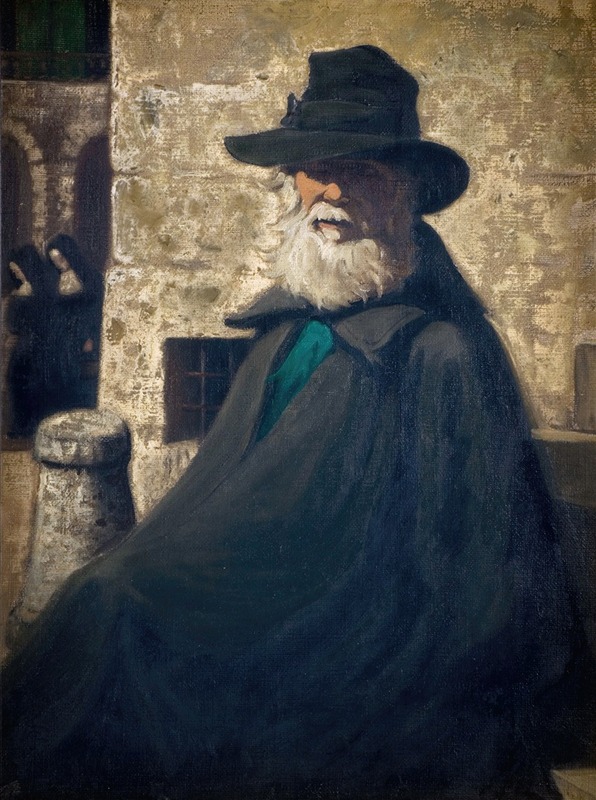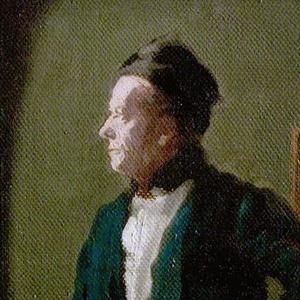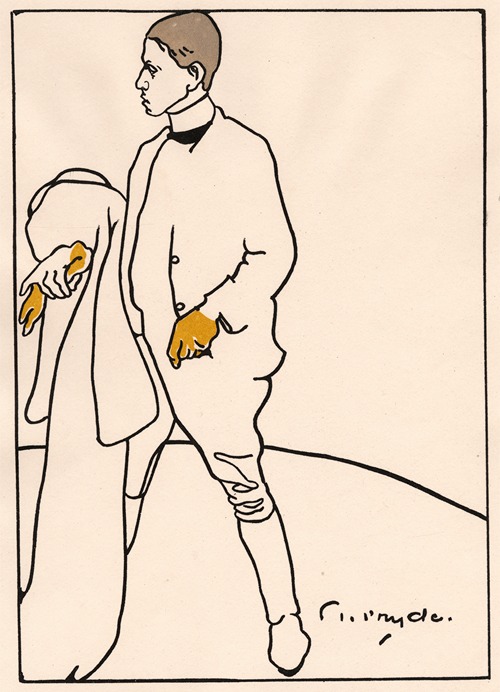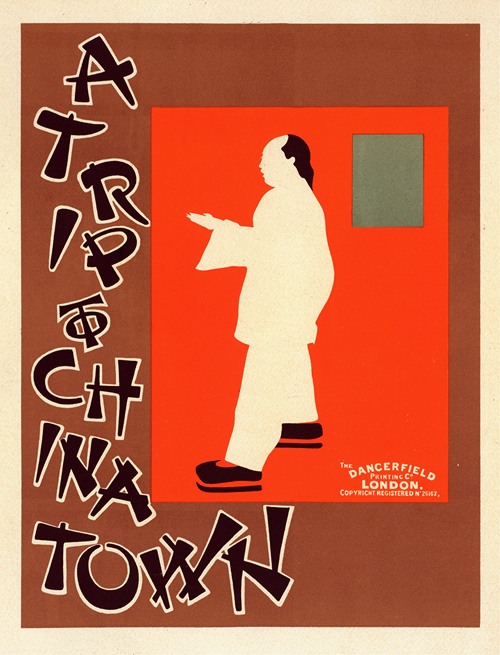

James Ferrier Pryde was a British artist. A number of his paintings are in public collections, but there have been few exhibitions of his work. He is principally remembered as one of the Beggarstaffs, his artistic partnership with William Nicholson, and for the poster designs and other graphic work they made between 1893 and 1899, which had a powerful and far-reaching influence on graphic design for many years.
James Ferrier "Jimmy" Pryde was born at 23 London Street, Edinburgh, on 30 March 1866. He was the only son of the six children of David Pryde (1834–1907), who was headmaster of Edinburgh Ladies' College from 1870 to 1891, and his wife Barbara née Lauder (born 1833 or 1834), whose father William was a brother of the famous Scottish artists Robert Scott Lauder and James Eckford Lauder. The family moved to 10 Fettes Row, Edinburgh, in 1872. Pryde attended George Watson's Boys' College, and from 1885 to 1888 studied at the Royal Scottish Academy, where he had first exhibited in 1884. He was encouraged to paint by the Glasgow school painters James Guthrie and Edward Arthur Walton. In about 1899 he went to Paris to study under William-Adolphe Bouguereau at the Académie Julian, but the dismal and crowded atelier with its smell of tobacco smoke, stove-oil and human sweat did not please him, and after three months he returned to Scotland. In 1890 he went to London, and began to make pastel drawings in a style influenced by that of James McNeill Whistler.
In 1899 Pryde married Marian Symons, a musician; their daughter Betty was born in 1903. The marriage ended in separation in 1914.
In 1893 his sister Mabel married William Nicholson, four years after the two had met while studying at Hubert Herkomer's school of art in Bushey, in Hertfordshire. In the same year Pryde and Nicholson formed the Beggarstaff partnership, which lasted until 1899, and produced innovative poster designs and signboards.
Between 1894 and 1899 Pryde tried his hand as an actor, playing small parts in several plays.
He was an associate of the International Society of Sculptors, Painters and Gravers from 1901 and Vice-President in 1921. His first one-man exhibition was held at the Baillie Gallery in 1911. He also exhibited at the Goupil Gallery, the Leicester Galleries, the Grosvenor Gallery, London Salon, New English Art Club, Royal Hibernian Academy, Royal Glasgow Institute of the Fine Arts and Royal Scottish Academy. In 1934 he was elected an honorary member of the Royal Institute of Oil Painters.
His only work as a theatre designer was for a production at the Savoy Theatre of Othello in 1930.
He became ill in 1939, and died on 24 February 1941 in St Mary Abbots Hospital in Kensington. He was cremated at Golders Green Crematorium.


